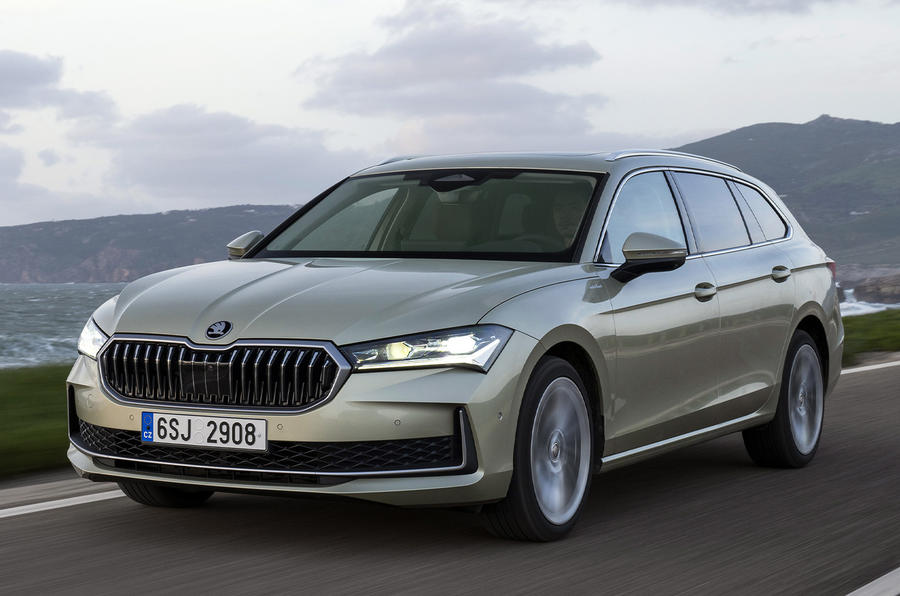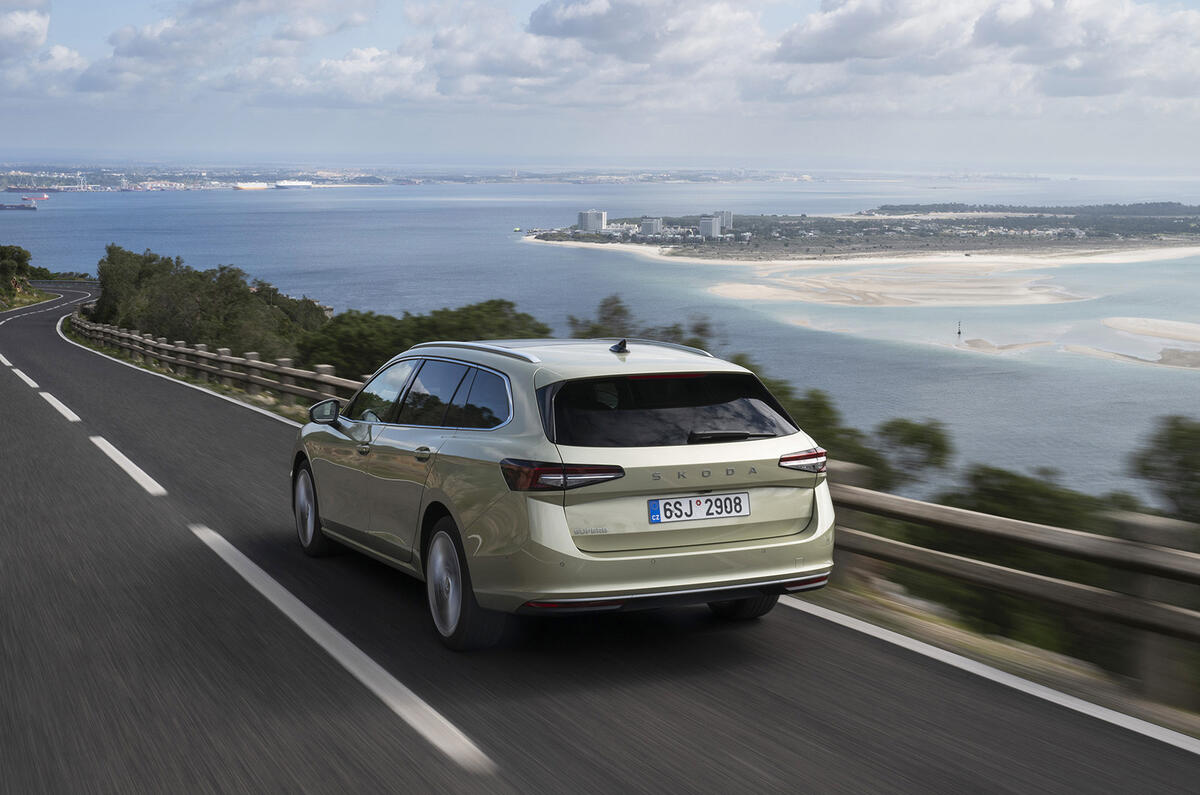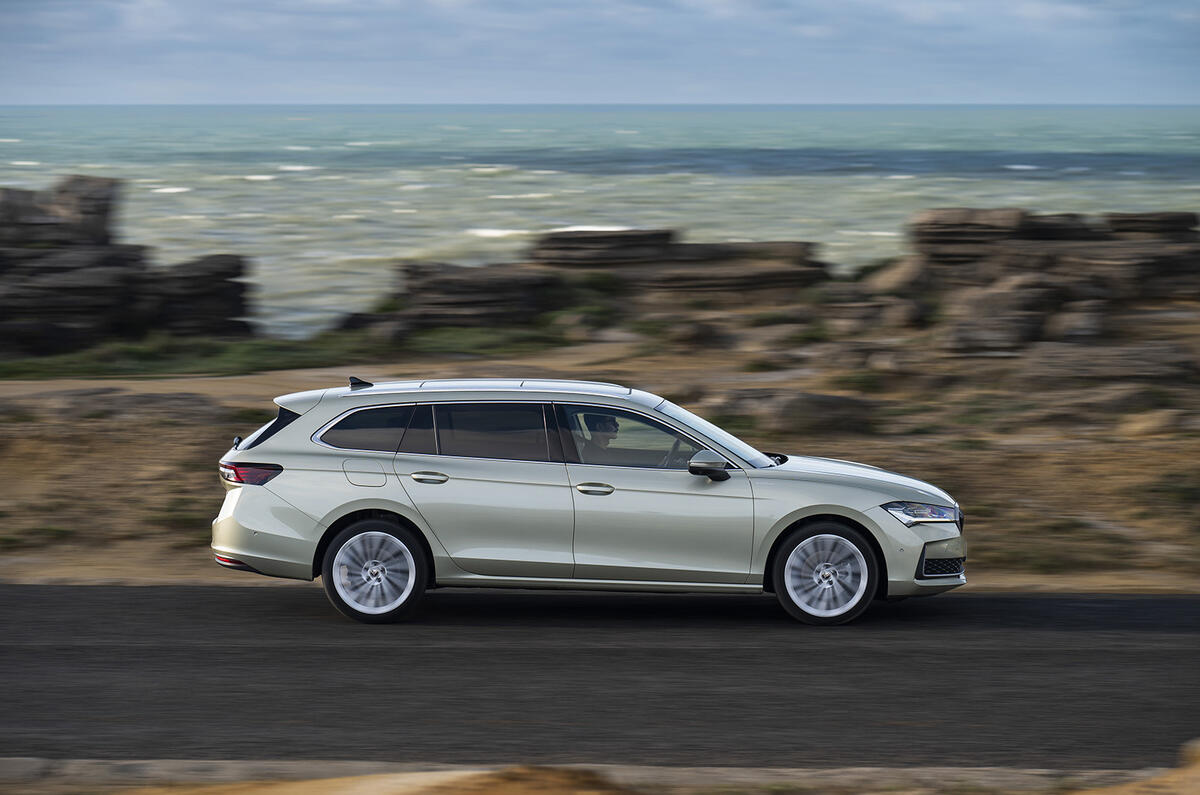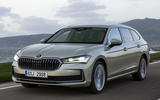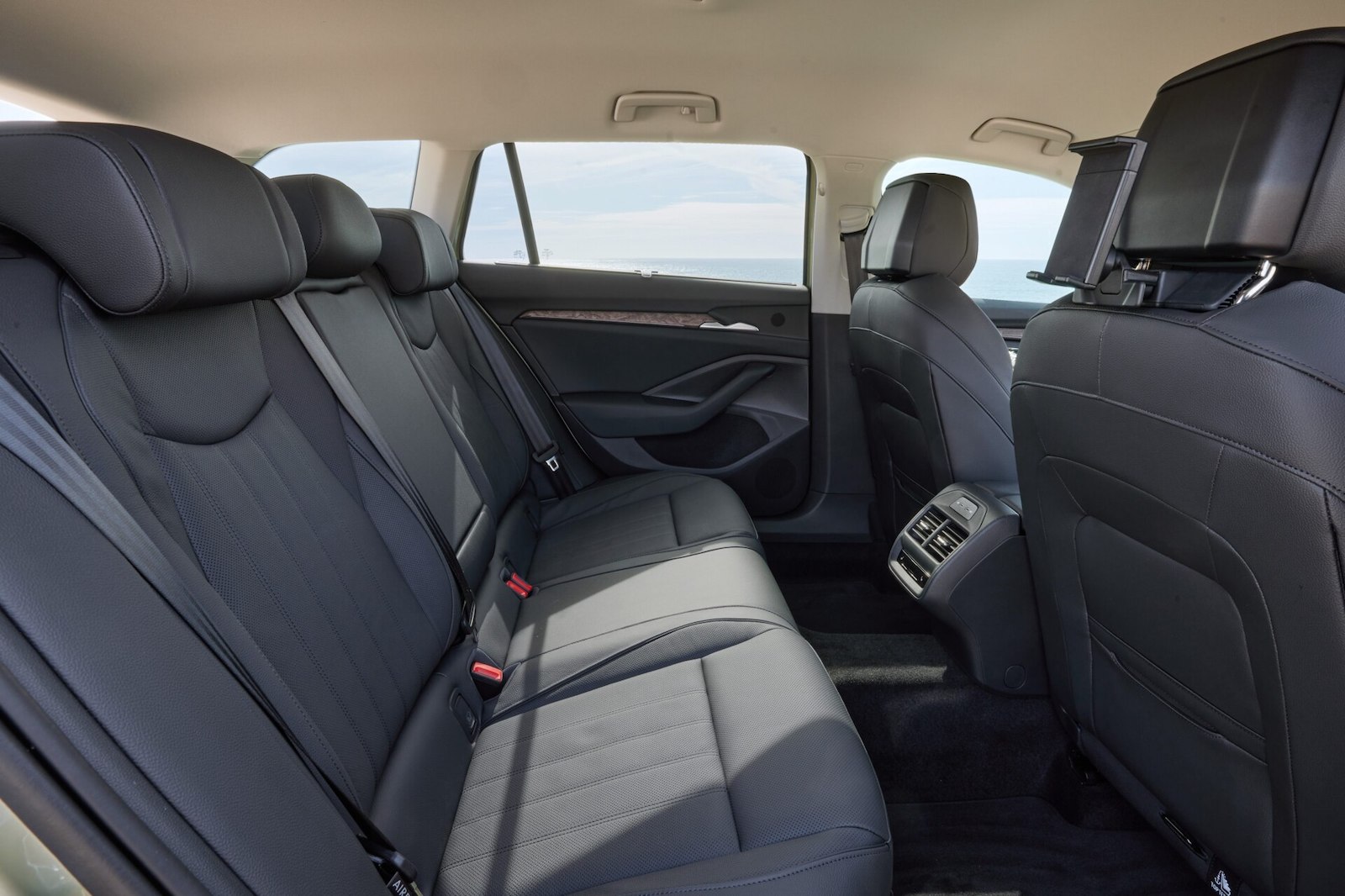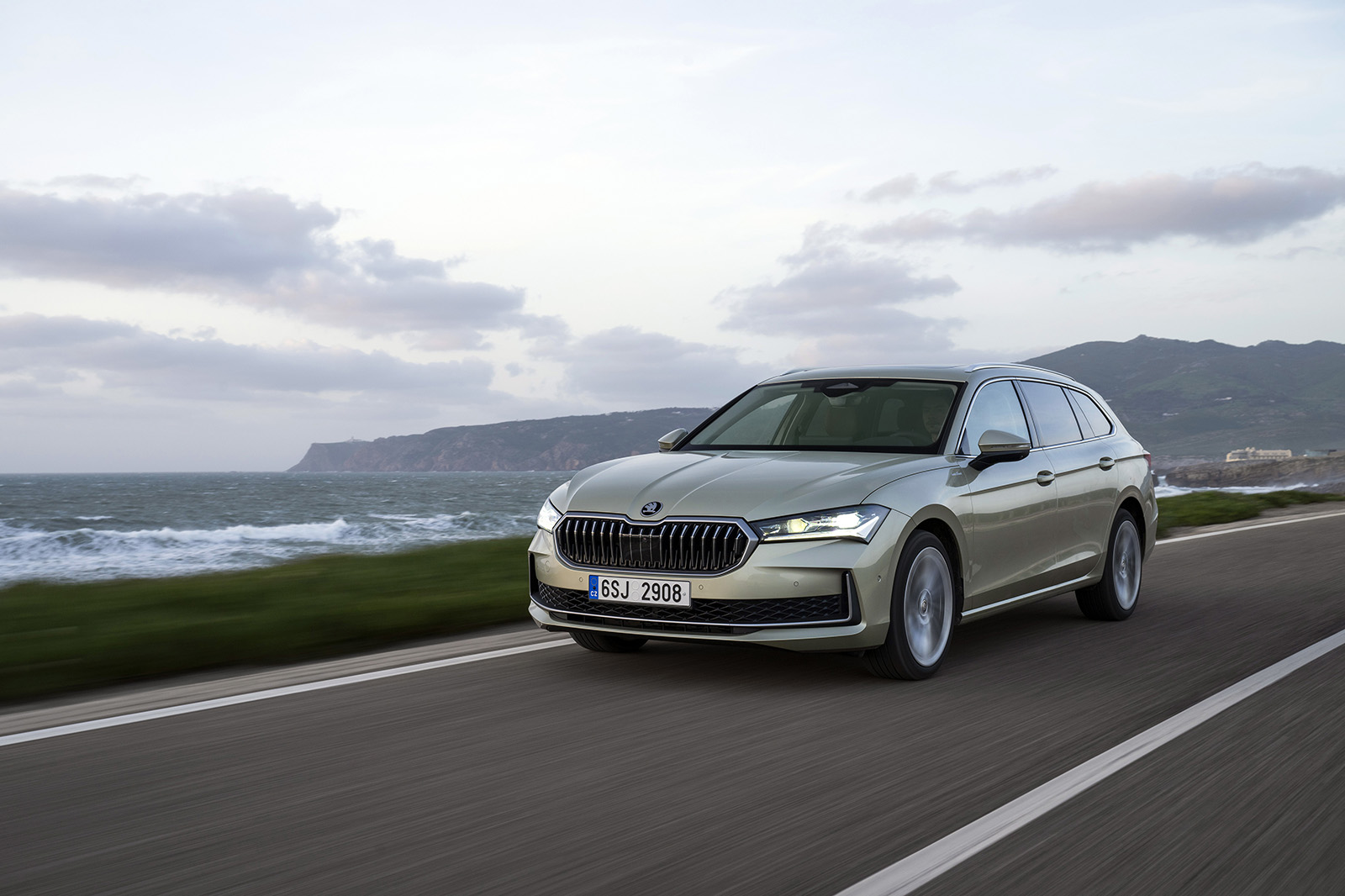Inside? Well, let’s start with the rear, because a voluminous boot has been front and centre of the Superb’s appeal and that’s no different this time. Luggage capacity with seats in place is 690 litres, up 30 litres from before.
There is a storage cubby to the left, latches by the tailgate to drop the rear seats, luggage hooks, Velcro barriers to secure loads from sliding and even now an electric load-bay cover. If you want the best estate boot in the business, there’s a strong chance this is it.
It gets 80 litres smaller in the plug-in hybrid version, which has a higher load floor, but not by much – enough to make the load-bay flat, rather than having a lip up to the rear seats.
Those rear seats offer large amounts of leg room, head room is good, which takes us up to the front seats: also spacious, comfortable, with a roomy and straight driving position.
The business end of the cabin is mostly successful. “We have closely listened to our customers and brought haptic controls back,” says Johannes Neft, Skoda’s technical development chief.
Sometimes it feels like listening to customers is a novelty, so as well as a large, 13in landscape touchscreen in the dash centre, there are three multi-function rotary dials and some supplementary buttons beneath it.
You can preset what the dials do, then give them a push to change the function, then rotate them to change the settings. So: temperature, fan speed, drive mode – that sort of thing. All straightforward.
The round, broadly adjustable steering wheel has real buttons too, plus two pushable scroll wheels. (A press of one button brings up the driver assist systems and the scroll wheel pings them off.)
The gear selector has moved to the right-hand stalk to free up space on the centre tunnel, so the left handles indicators and wipers. There’s a separate light-switch panel. Mirrors and even each individual window get actual buttons. I know, it’s 2024, I shouldn’t have to say this, but here we are.
If it is less successful, it’s in the feel of some materials. All look good, and most feel solid – stuff you touch regularly, like the doors, particularly.
But those rotary dials feel a bit flimsy and if you push some places on the dash, it’ll creak and move under-thumb a bit, not unlike a modern Mercedes (likewise more about show than solidity). Not a big deal, but feels worth mentioning because it’s unusual, a little sensibility given over to style, at a cost.





